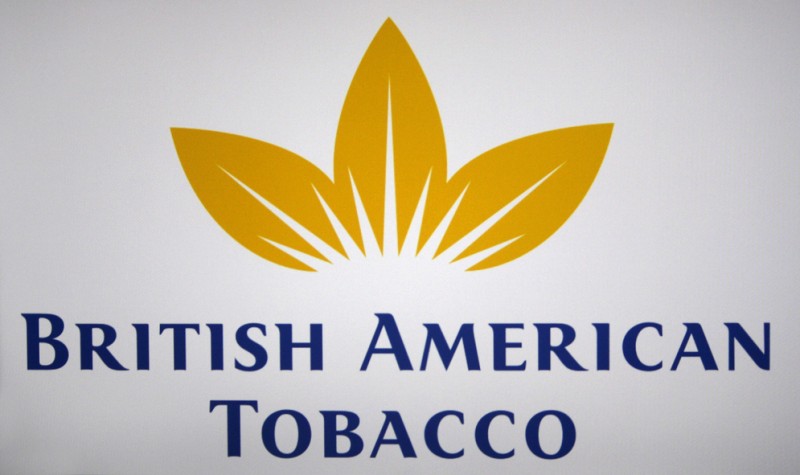Is British American Tobacco’s Brexit Bounce Over?

BAT’s sales and earnings are on the rise again. However, the shares are full of profit given that the share price has risen by a third over the last year. By past standards the shares do not look particularly cheap. Last year’s dividend yield is only 3.1%, and this year’s and next are estimated at 3.3% and 3.5% respectively. I judge the shares a ‘hold’ as a hedge against any further sterling weakness. I reckon that the prospects for BAT over the medium term look more encouraging than those of the pound sterling. Sterling has fallen significantly not only because of economic uncertainty for the near and medium term but also because of the small market size of sterling compared with the US dollar and the Euro. The pound’s period as a part time, quasi reserve currency is over.
British American Tobacco (BATS) has had a strong run. That prompts me to have a look beneath the bonnet at the smoking engine of its operations and the current fundamental value and valuation. Has the Brexit effect gone too far? Are the shares now up with events and fully valued?
On 23rd June 2016 the share price was 4,276p. By 5th July it had reached 5,035p, making for a rise of an impressive 17.8 per cent in twelve days or so. The share price found overhead resistance at that point and has since come down to 4,964p (last seen), tracing out a new, narrow trading range running from around there to 5,035p.
Sales and debt
The previous worrying feature of BAT’s commercial progress was the decline in top line sales revenue. That had peaked at £15.26 billion in 2013 but slumped 14 per cent to £13.1 billion last year (the year to 31st December 2015). That is not helpful for any company, but particularly so for a company which is an industry brand leader.
So it is reassuring to see that the nibelungens, who estimate consensus estimates of company performance, see good growth in the top line revenue stream this year and next. That is to say, they are forecasting that sales revenue will increase by 6.7 per cent this year and 6.9 per cent next year. I think they may be conservative in light of the weakness of the pound (of which more later), but more importantly, they demonstrate that BAT is back in the business of growth. Last year the company made significant acquisitions which it is now turning into earnings growth one way and another.
A quick look at last year’s balance sheet shows that group total assets had mushroomed by 20 per cent to £31.5 billion, courtesy of the related fact that long-term debt has risen by even more to fund the takeover. Long-term debt shot up 51 per cent to nearly £15 billion. That inevitably meant that the equity value of this company fell from £5.5 billion to £4.9 billion – 11 per cent down year on year and 26 per cent down over two years – a hefty reduction which, apart from providing future profits and earnings, is also an example of an inverted Warren Buffett price to book measure of value. As the share’s market capitalisation grows in order to generate profits the value of the net assets decreases, distancing market value from net assets.
Some earnings are retained to offset this but by only a small below-average proportion because of the high payout ratio. Last year dividend payout was 73 per cent of earnings, which translates into a cover of only 1.3 times. However, to judge from analysts’ forecasts that should revert to a more normal 1.5 times cover next year, suggesting that part of earnings will go back into the business.
That will be desirable because the debt to equity ratio (the gearing/leverage ratio) was reported last year to be a giddy 331 per cent.
Earnings and dividends
The management are now setting about the task of turning acquisitions into earnings per share. The market in consensus is looking for a 16 per cent rise in earnings this year and 11 per cent next year, with dividends growing at around 6.8 per cent annually. Those estimates chime with the first-half results to 30th June and are now firmly reflected in the price.
The other two themes of the business, the growth in plain packaging (and its impact on branded sales which drive the global growth the business) and its diversification into new generation non-tobacco products, took on a positive hue in the first-half report. Despite my constant worry about a likely increasing impact of plain packet regulation on a big brand cigarette company like this one, the first-half report was somewhat positive. Market share was reported to be up 0.3 per cent in general, with the big brand cigarettes reported to have increased market share by 0.8 per cent. I remain cautious and wonder if acquisitions flatter this figure.
We were also told that new generation ‘vapour’ products were growing significantly with meaningful market shares established in the UK, Germany and France, with more to come. (Talk of ‘vapours’ and the prospect of young people going to work in great clouds of smoke seems to confirm that we are indeed heading back to the 19th century.)
These shares have holding attractions at this level.
Comments (0)